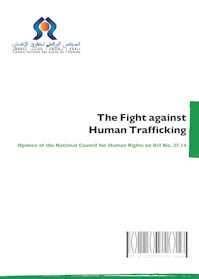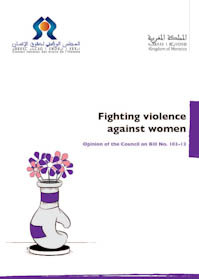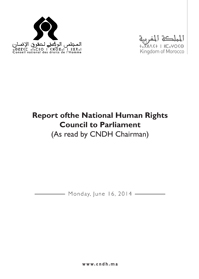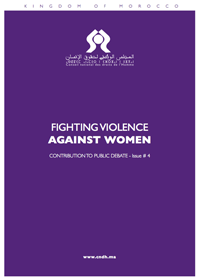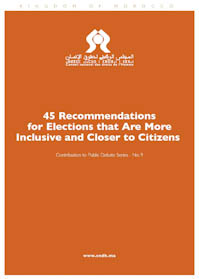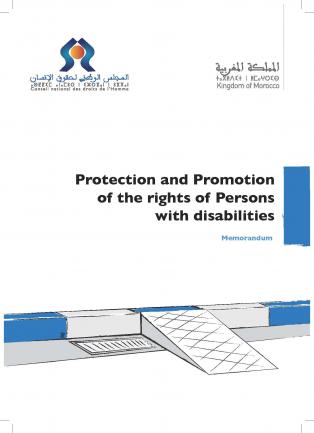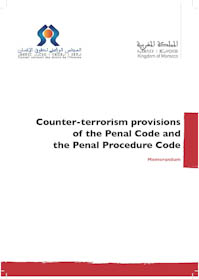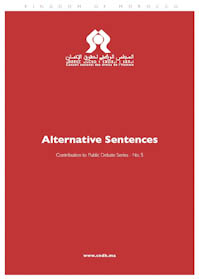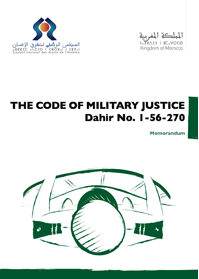Death Penalty and International Human Rights Law
Brief Overview. The international human rights law has been adopted recently. Like other human rights, the right to life has begun to be considered as a matter falling within the remit of this law since 1948, the year of the adoption of the Universal Declaration of Human Rights (UDHR). The UDHR put an end to a long period in which the notion of "reserved area" was applied without hesitation to human rights-related affairs by deeming them as falling within the domestic jurisdiction of a State.The international human rights law has been adopted recently. Like other human rights, the right to life has begun to be considered as a matter falling within the remit of this law since 1948, the year of the adoption of the Universal Declaration of Human Rights (UDHR). The UDHR put an end to a long period in which the notion of "reserved area" was applied without hesitation to human rights-related affairs by deeming them as falling within the domestic jurisdiction of a State.
Therefore, the idea of an international public order, calling into question the legitimacy of the death penalty, when the latter was legally established in a given country, is a much more recent question.
The 1966 International Covenant on Civil and Political Rights will be then the first international instrument to address the death penalty.
The preparatory proceedings for the UDHR show that the abolition was not on the agenda, despite the fact that the Soviet bloc had advocated the abolition of the capital punishment in peace time, as was the case with the USSR who had officially abolished it in 1947.
The Soviet bloc proposed an amendment to Article 3 of the UDHR on the right to life. It was rejected by the UN Commission on Human Rights, by 21 votes against 9 and 18 abstentions. It is worth mentioning that this vote should not be considered as for or against capital punishment.
The substantive debate would not be closed by the adoption of the UDHR. In the European framework, through the 1950 European Convention on Human Rights, this question would be dealt with explicitly for the first time. Article 2 of the Convention enshrines what appears to be an exception: "everyone's right to life shall be protected by law. No one shall be deprived of his life intentionally save in the execution of a sentence of a court following his conviction of a crime for which this penalty is provided by law”. This dual requirement of "legality" of the sentence pronounced by a "court" in the Convention means, according to case law, an independent and impartial tribunal guaranteeing the rights of defense. However, we can say that these procedural safeguards can only reinforce the "legality" of the death penalty and its legitimacy under the Convention.
The International Covenant on Civil and Political Rights will reflect a much more advanced stage in international law in dealing with the death penalty more importantly. By providing for the right to life in clear and strong terms, Article 6 of the Covenant 1 refers to the special situation of states which have not yet abolished the death penalty. The provisions of the Covenant relating to the right to life have earlier tendency to take into account the situation of some states to better regulate a practice that appears derogatory in comparison to this right, by imposing explicit limits such as the concept of "the most serious crimes", the principle of legality and the non-retroactivity of sentences. Other provisions of the Covenant refer to other implicit limits, including the "due process of law” and the right to appeal 2. It should be noted that Article 6 of the Covenant specifies further personal limits to the death penalty.
These provisions will be strengthened by a more general paragraph which states: "Nothing in this article shall be invoked to delay or to prevent the abolition of capital punishment by any State Party to the present Covenant." In other words, by limiting the excesses of the death penalty and moderating its application, the Covenant aims to gradually abolish it by putting non abolitionist States on the defensive and putting legal obstacles, till the complete abolition is achieved. Thus, one can conclude that the change in international human rights law has taken several paths to achieve the same goal: a general and universal abolition of the death penalty. The European and universal instruments on the promotion and protection of human rights have contributed to the gradual and continuing disappearance of the death penalty.
By Abderrazak Rouwane, Head of the CCDH Foreign Affairs and Cooperation Department
__________________________________________________________
1 Article 6 stipulates that:
1. Every human being has the inherent right to life. This right shall be protected by law. No one shall be arbitrarily deprived of his life.
2. In countries which have not abolished the death penalty, sentence of death may be imposed only for the most serious crimes in accordance with the law in force at the time of the commission of the crime and not contrary to the provisions of the present Covenant and to the Convention on the Prevention and Punishment of the Crime of Genocide. This penalty can only be carried out pursuant to a final judgement rendered by a competent court.
3. When deprivation of life constitutes the crime of genocide, it is understood that nothing in this article shall authorize any State Party to the present Covenant to derogate in any way from any obligation assumed under the provisions of the Convention on the Prevention and Punishment of the Crime of Genocide.
4. Anyone sentenced to death shall have the right to seek pardon or commutation of the sentence. Amnesty, pardon or commutation of the sentence of death may be granted in all cases.
5. Sentence of death shall not be imposed for crimes committed by persons below eighteen years of age and shall not be carried out on pregnant women.
6. Nothing in this article shall be invoked to delay or to prevent the abolition of capital punishment by any State Party to the present Covenant.
Article 7 states that No one shall be subjected to torture or to cruel, inhuman or degrading treatment or punishment. In particular, no one shall be subjected without his free consent to medical or scientific experimentation.
2 See the general comment of the human rights committee on Article 6 of the Covenant, mainly paragraphs 6 and 7 which state that: “While it follows from article 6 (2) to (6) that States parties are not obliged to abolish the death penalty totally they are obliged to limit its use and, in particular, to abolish it for other than the "most serious crimes". Accordingly, they ought to consider reviewing their criminal laws in this light and, in any event, are obliged to restrict the application of the death penalty to the "most serious crimes". The article also refers generally to abolition in terms which strongly suggest (paras. 2 (2) and (6)) that abolition is desirable. The Committee concludes that all measures of abolition should be considered as progress in the enjoyment of the right to life within the meaning of article 40, and should as such be reported to the Committee. The Committee notes that a number of States have already abolished the death penalty or suspended its application. Nevertheless, States' reports show that progress made towards abolishing or limiting the application of the death penalty is quite inadequate. “The Committee is of the opinion that the expression "most serious crimes" must be read restrictively to mean that the death penalty should be a quite exceptional measure. It also follows from the express terms of article 6 that it can only be imposed in accordance with the law in force at the time of the commission of the crime and not contrary to the Covenant. The procedural guarantees therein prescribed must be observed, including the right to a fair hearing by an independent tribunal, the presumption of innocence, the minimum guarantees for the defence, and the right to review by a higher tribunal. These rights are applicable in addition to the particular right to seek pardon or commutation of the sentence.”
__________________________________________________________
The death penalty worldwide in 2008
Source: Ensemble Contre la Peine de Mort : www.abolition.fr
- 94 countries have abolished the death penalty for all crimes.
- 9 countries have abolished the death penalty for all crimes except some such as those committed in wartime.
- 41 countries can be considered as abolitionist in practice: the death penalty is still provided for by the legislation, but no executions have taken place for at least ten years
A total of 144 countries no longer execute (April 2008).
Recent examples include Rwanda (July 2007) and Uzbekistan (January 2008).
- 54 countries continue to execute, led by China, Iran, the United States.
Other figures
- In 2006, 1,591 people have been officially executed in the world and approximately 20,000 others are waiting in death row. But the figures fall short of reality because of lack of transparency related to the death penalty prevailing in some countries (China, Iran, Saudi Arabia, Japan ...)
The methods of executions
Since 2000, the following methods have been used:
- Decapitation (Saudi Arabia)
- Electrocution (USA)
- Hanging (Egypt, Iran, Iraq, Jordan, Pakistan, Singapore)
- Lethal injection (USA, China, Guatemala, Thailand)
- Execution by bullet (Belarus, China, Uzbekistan, Somalia, Taiwan, Vietnam)
- Stoning (Afghanistan, Iran)
Minors and the death penalty
The 1989 Convention on the Rights of the Child prohibits the death penalty for anyone under the age of eighteen.
A small number of countries continues to execute child offenders. In 2006, Pakistan executed a minor and in January 2008, Iran executed seven. The United States abandoned the execution of minors in 2005.
Main reasons of death sentences in the world
54 countries continue to apply the death penalty in the world, mostly for:
- Murder
- Corruption
- Pimping
- Robbery
- Adultery
- Homosexuality
- Drug trafficking
- Economic crimes (tax evasion, abuse of confidence)






